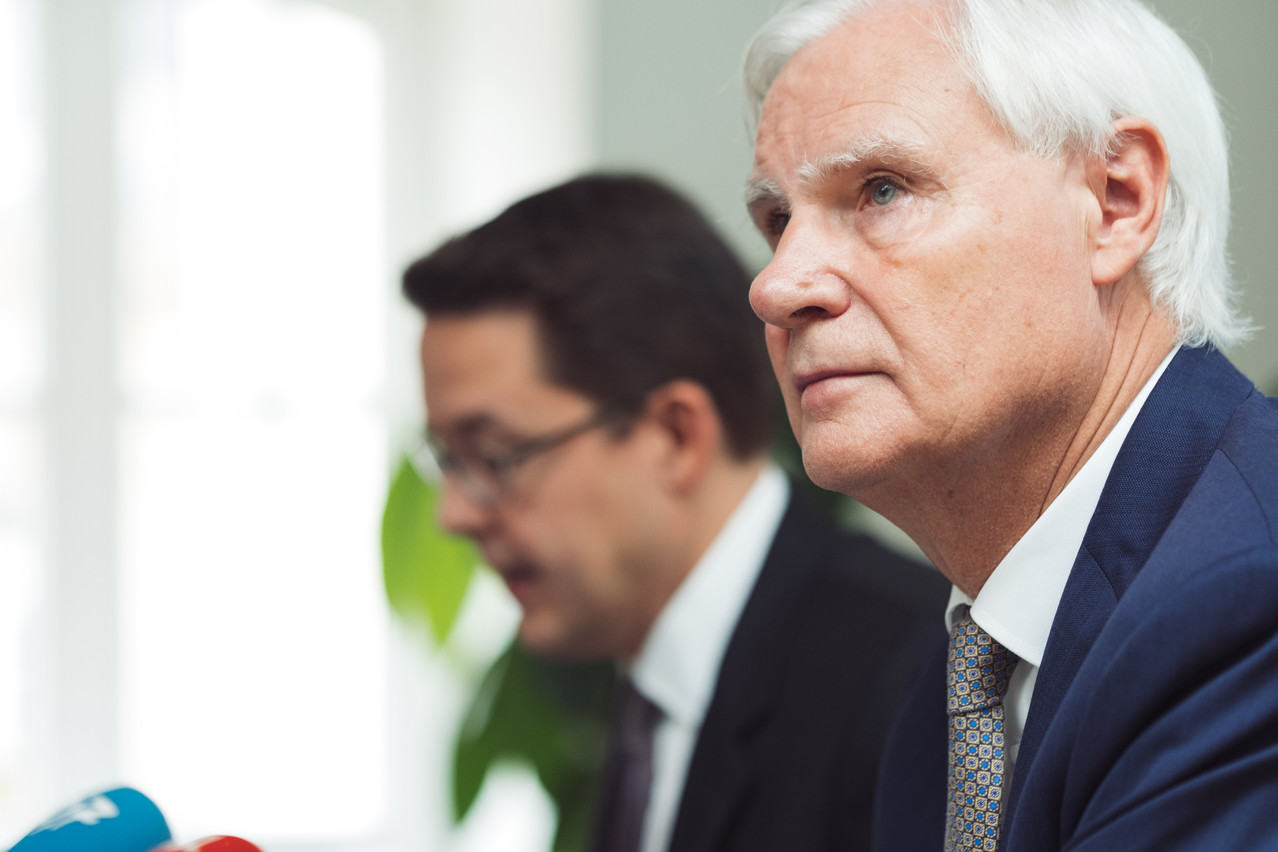This is the first report which goes beyond analysing the yearly budget or the excessive deficit procedure criteria (EDP) by the European Commission.
Entitled “evaluation of the long-term sustainability of public finances”, it analyses the impact of an ageing population on spending.
The main recommendation is to raise the medium-term budgetary objective to between +0.25% and +1% of GDP for 2020-2022.
The National Council of Public Finance (Conseil national des finances publiques or CNFP) has been advising the government since 2014 and is charged with monitoring public finances. Its members are chosen based on suggestions by the government, parliament, the professional chambers representing employees and civil servants as well as business owners.
While the CNFP gave a green light for the 2016 and 2017 budget on reaching their medium term objectives (MTO), it nevertheless warned that high population growth and an ageing population would place significant strain on public finances by 2030 and be unsustainable in the long term.
The following definition of sustainable public finances is used:
When public administrations can ensure the financing of their public debt, as well as of all the future spending--including future spending linked to an ageing populatio--with future government revenue at long-term and no change in budgetary policies, meaning without having to raise taxes or social contributions and/or reducing spending in terms of percentages to GDP.
To measure the sustainability, the CNFP calculated how the debt ratio would evolve if there was no policy change. If it did not stabilise, additional measures would be necessary.
The long-term sustainability indicator S2 measured the fiscal measures that would be necessary to bring public finances on a sustainable path.
“Sustainability is a challenge in the short, medium and long term”
Yves Nosbusch, the chair of the council, did not mince his words.
For 2018, public debt is estimated at 22.3% in 2018, which is below the 30% set by the current government, and will stay within the SGP criteria.
He said calculations included the current demographic projections by the government; 1.1 million by 2060 and growth levels permanently at over 2%.

However, for the medium term, there is a low risk for the sustainability of public finances, based on the sustainability indicators of the European Commission, which sets public debt at 60%. However, the CNFP sets the debt levels at a more appropriate 30% of GDP for the grand duchy, because of the openness of the economy and the exposure to external shocks. It notes that “the risk stays low, but is edging towards the threshold where the risk becomes medium.” The budgetary adjustment would have to be around 0.5% to stay below 30%.
In the long term, challenges will appear, especially because of future spending related to an ageing population which would increase from 19.2% of GDP in 2018 to 25.9% of GDP in 2060, an increase of more than 30%. These challenges have been approached in several ways.

Public debt would cross the 30% threshold in 2033, and would be over 60% in 2043. Public debt ratio would reach 161% of GDP in 2060. On the basis of the evolving public debt ratio and with current policies, Luxembourg would face a sure risk concerning the sustainability of its public finances.
Using the sustainability indicators of the European Commission, Luxembourg will be confronted with a medium risk for the long-term sustainability of its public finances, however it would be close to a threshold where risk would be considered as high.
Compared to other EU member states, Luxembourg is facing the highest risks.

Medium term objectives
All EU countries are expected to reach their medium-term budgetary objectives (MTOs), or to be heading towards them by adjusting their structural budgetary positions at a rate of 0.5% of GDP per year as a benchmark.
The current MTO set by the European commission for the member states is a debt ratio of 60%, and covering a third of expenses related to an ageing of the population. Luxembourg’s medium-term objective stands currently at a moderate -0.5% of GDP.
The CNFP has calculated that, if one takes the 30% debt ratio as a guide, the CNFP calculates at the minimum MTO would be between +0.25% and +1% of GDP to ensure the financing of a third of the expenses related to the ageing population.
If the objective was to achieve 30% debt ratio and financing 100% of the ageing related expenses, the minimum MTO would be +4%.
Warning
“one should not forget that these forecasts are based on much higher demographic and economic growth levels than in any other EU member states. Even in a scenario of such high growth levels, the long-term sustainability indicators demonstrate that important adjustments of the financing of social security will in time be necessary. Even if these challenges will come in the long term, considerations of intergenerational equity demand the implementation of measures in the short and medium term.”
Recommendation
The CNFP recommends that the MTO, which should be fixed in April 2019 for the budgets 2020-2022, should be targeted at +0.25% to +1% of GDP, depending on the economic and budgetary developments in 2017 and 2018. This budgetary surplus should meet the 30% debt ratio to GDP requirement and finance 1/3 of the ageing costs of the population.
It notes: “As 2/3 of these costs would however still need to be financed, political choices would necessarily have to be made, beyond the simple setting of the MTO.”
